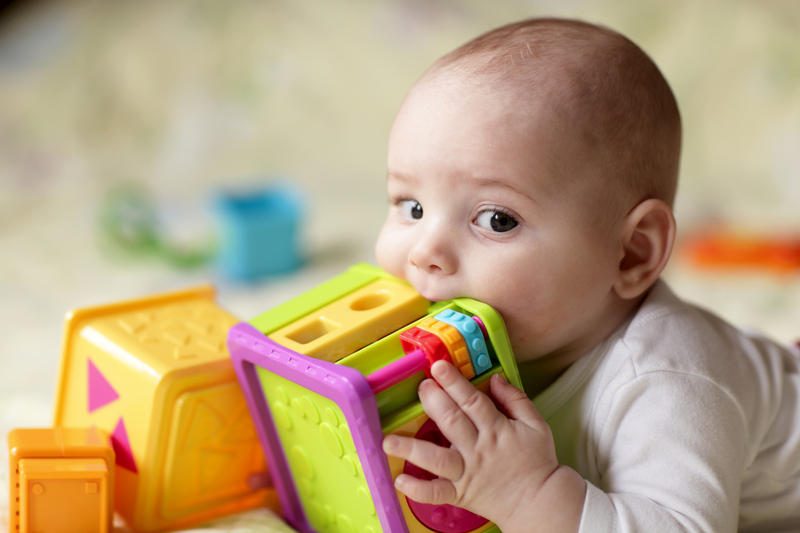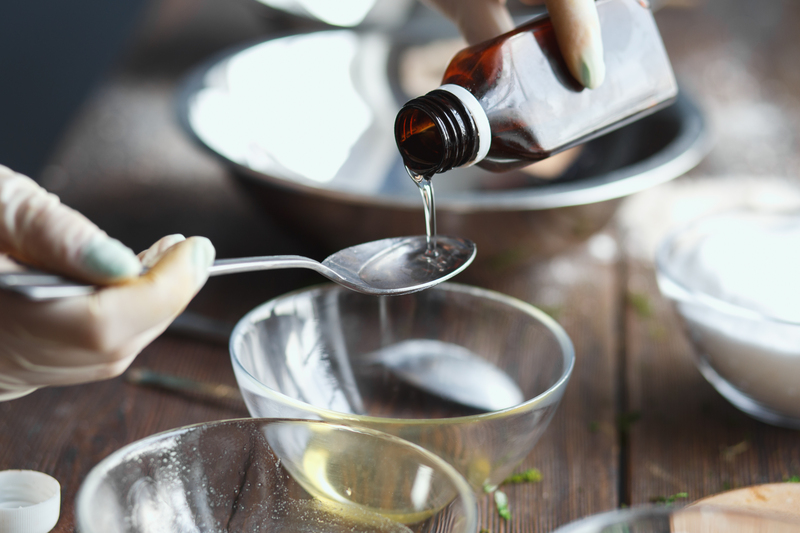Velvet Curtain Care: Expert Washing Strategies
Posted on 03/06/2025
Velvet Curtain Care: Expert Washing Strategies
Maintaining the sumptuous appeal of velvet curtains involves more than admiring their luxurious texture. Proper care and washing strategies are essential to preserving their beauty and longevity. Whether your velvet drapes are the centerpiece of your living room or a cozy bedroom accent, following expert advice on curtain care ensures they remain in excellent condition for years to come. In this comprehensive guide, we'll elucidate all aspects of velvet curtain washing and maintenance--from routine cleaning to removal of tough stains and professional tips for safe washing. Get ready to discover expert tips and strategies for washing velvet curtains that are both effective and gentle on the fabric.

Table of Contents
- Why Velvet Curtain Care Is Important
- Types of Velvet and Their Washing Requirements
- Reading Care Labels on Velvet Curtains
- Daily and Weekly Routine for Velvet Curtain Cleaning
- Expert Washing Strategies for Velvet Curtains
- Spot Cleaning Velvet Curtains
- Machine Washing vs. Hand Washing Velvet Drapes
- Best Practices: Drying and Ironing Velvet Curtains
- Mistakes to Avoid When Caring for Velvet Curtains
- How to Store Velvet Curtains Properly
- Frequently Asked Questions (FAQ) on Velvet Curtain Care
Why Velvet Curtain Care Is Important
Velvet is renowned for its elegant shimmer, creating a dramatic and chic aesthetic in homes and commercial spaces. But this soft pile fabric requires specialized care. Caring for velvet drapes properly helps:
- Prolong their lifespan: Preventing fibers from breaking down extends the life of your investment.
- Maintain their luster: The pile finish of velvet curtains can become dull without expert cleaning.
- Retain vibrant color: Poor cleaning can lead to color fading or patchiness.
- Prevent odor and allergen buildup: Regular, correct washing strategies keep your home fresh and hygienic.
Ignoring proper velvet drapery care may result in irreversible damage, such as matting, shrinking, or color loss. Therefore, understanding effective velvet curtain washing strategies is critical.
Types of Velvet and Their Washing Requirements
Not all velvet is created equal. Before selecting a washing strategy, identify the type of velvet your curtains are made from:
1. Cotton Velvet
- Luxuriously soft, but absorbs moisture quickly.
- Often less resilient to aggressive washing.
- May require dry cleaning or gentle hand washing.
2. Synthetic Velvet (Polyester, Nylon, or Rayon)
- More durable and less prone to shrinking.
- Some types are machine washable -- always check the label.
- Retains vivid color well, but heat exposure can damage the pile.
3. Silk Velvet
- Delicate and extraordinarily luxe; highly sensitive to water and detergents.
- Usually requires professional dry cleaning only.
- Can lose sheen or become misshapen if washed incorrectly.
4. Crushed or Embossed Velvet
- Characterized by textured patterns or a "crushed" effect.
- Extra care needed to avoid flattening designs or altering the effect.
- Consult manufacturer's instructions before washing.
Always choose your washing method based on the velvet type and the curtain's construction.
Reading Care Labels on Velvet Curtains
Most velvet curtains come with sewn-in care labels. This is your best starting point for determining appropriate cleaning strategies. Look for symbols or instructions detailing:
- Whether the curtain is machine washable, hand wash only, or dry clean only
- Maximum water temperatures to use
- Suitable detergents
- Ironing or steaming guidelines
Never disregard the care label--cleaning velvet against manufacturer guidelines can ruin the fabric's appearance and function.
Daily and Weekly Routine for Velvet Curtain Cleaning
Consistent velvet drapery care minimizes the need for frequent washing, which can wear down the fabric. Incorporate these expert routines:
Daily Maintenance
- Shake out Dust: Give your curtains a gentle shake or lightly brush with a soft-bristled tool to loosen dust particles.
- Avoid Direct Sunlight: Sun fades velvet; keep curtains partially closed or install sheer linings.
Weekly Cleaning
- Vacuum on Low Suction: Use a handheld vacuum or upholstery attachment, brushing in the direction of the pile to prevent matting.
- Spot Check for Stains: Inspect for spills and address immediately (see next section).
Routine care is essential for preserving velvet curtain beauty and minimizing intensive washes.
Expert Washing Strategies for Velvet Curtains
Eventually, all velvet curtains require a thorough wash. Employing the right method is crucial to avoid damaging the fabric. Here are the leading expert washing strategies for velvet curtains:
1. Pre-Washing Preparation
- Remove Hardware: Take down your curtains, remove hooks, and shake gently outdoors to dislodge dust.
- Test a Hidden Corner: Test a small inner hem with water and mild detergent to check for color fastness and shrinkage.
- Spot Clean: Address specific stains before full washing (details below).
2. Choosing the Right Detergent
- Opt for mild, fragrance-free detergents--harsh chemicals damage velvet fibers.
- Avoid bleach or fabric softeners, which can leave residue or cause discoloration.
3. Hand Washing Velvet Curtains
- Fill a large basin or bathtub with cool or lukewarm water and add a small amount of mild detergent.
- Immerse the curtain gently, swishing it through the water without vigorous scrubbing or wringing.
- Allow to soak for 5-10 minutes if needed, then rinse thoroughly with cool clean water.
- Support the curtain's weight during draining, as wet velvet is heavy and easily misshapen.
4. Machine Washing (If Label Permits)
- Use a gentle or delicate cycle with cold water.
- Place velvet drapes in a mesh laundry bag to minimize friction.
- Wash curtains separately to avoid color transfer or pile crushing.
- Skip the spin cycle or use only the lowest setting to reduce stress on the fabric.
Tip: When in doubt, wash by hand or consult a professional dry cleaner experienced with velvet drapery.
Spot Cleaning Velvet Curtains
Spills and stains are inevitable. Skillful spot cleaning is the safest approach for minor marks or isolated dirt. Here's how to proceed:
- Blot Immediately: For liquid spills, blot with a clean, dry microfiber cloth. Do not rub, as this presses the stain deeper or damages the pile.
- Prepare a Cleaning Solution: Mix a small amount of mild detergent in cool water. Never use hot water or harsh chemicals.
- Test First: Always test the solution on a discreet edge to check for fading or shrinkage.
- Clean Gently: Dab the solution onto the stain using a cloth or soft-bristle brush--always working in the pile's direction.
- Remove Residue: Wipe with a damp, clean cloth to remove soap, then use a dry towel to absorb moisture.
- Allow to Air Dry: Leave to air dry completely (ideally hung up) and gently brush the pile to restore its texture.
Spot cleaning preserves the curtain's appearance without subjecting the entire panel to stress.
Machine Washing vs. Hand Washing Velvet Drapes
Determining whether to machine wash or hand wash velvet curtains depends on the fabric's material, age, and instruction label:
Machine Washing Pros & Cons
- Pros: Fast and labor-saving; suitable for sturdy synthetic velvet.
- Cons: Risk of pile crushing, color bleeding, or shrinkage; unsuitable for natural velvets.
Hand Washing Pros & Cons
- Pros: Gentle on fabric, allows for detailed stain removal, safer for delicate or expensive velvet.
- Cons: Labor-intensive; requires patience and careful handling.
For most luxurious or heirloom velvet drapes, hand washing or professional dry cleaning is the preferred method to maintain texture and color.
Best Practices: Drying and Ironing Velvet Curtains
How to Dry Velvet Curtains
- Never wring out velvet--this crushes the pile and alters the curtain's shape.
- Lay damp curtains flat on a clean towel, rolling gently to absorb excess water.
- Hang to air dry in a shaded area, supporting the length to prevent stretching.
- Avoid direct heat: Never use a tumble dryer or expose to sunlight.
Ironing and Steaming Velvet Drapes
- Avoid direct ironing on velvet; if necessary, use the lowest heat setting and iron from the back, with a pressing cloth between iron and fabric.
- For best results, use a handheld steamer to release wrinkles--keep the nozzle a few inches from the fabric surface.
- Always brush the pile gently after drying to restore velvet's characteristic nap.
Mistakes to Avoid When Caring for Velvet Curtains
Even the finest velvet curtains can be irreversibly damaged by common cleaning errors. Be sure to avoid:
- Using hot water or high heat, which shrinks fibers and ruins texture.
- Excessive scrubbing or wringing, leading to matting and pile loss.
- Harsh chemicals or bleach, which discolors velvet and weakens fibers.
- Forgoing care labels--never wash if labeled "dry clean only."
- Allowing stains to set; immediate blotting is vital.
- Storing while damp, which can cause mildew or permanent creasing.
How to Store Velvet Curtains Properly
If you're rotating seasonal decor or moving, you may need to store your velvet drapes. Follow this expert advice:
- Ensure Cleanliness: Only store clean, dry velvet--dirt or moisture encourages mold growth.
- Use Hanging Storage: Whenever possible, hang curtains on sturdy, padded hangers to retain shape and avoid fold lines.
- Avoid Plastic Bags: Use breathable cotton storage bags to prevent moisture buildup.
- Store in a Cool, Dark Place: Store velvet curtains in a closet away from direct sunlight and fluctuating temperatures.
- Occasionally Air Out: Every few months, air curtains out to prevent musty odors and prolong fabric life.
Frequently Asked Questions (FAQ) on Velvet Curtain Care
Can I wash velvet curtains in my washing machine?
Check the care label. Some synthetic velvets are machine washable on a gentle cycle, but natural or high-end velvets typically require hand washing or dry cleaning to avoid damage.
What is the safest way to dry velvet curtains?
Always air dry velvet curtains--hang them away from direct sunlight or heat sources. Never tumble dry, as heat crushes the pile and causes shrinkage.
How can I remove stubborn stains from velvet drapes?
Act quickly. Blot, don't rub, and use a solution of cool water and mild detergent. For persistent stains, consult a professional dry cleaner experienced with velvet.
Is steaming safe for velvet curtains?
Yes--steaming is usually preferred for wrinkle removal. Keep the steamer a few inches from the fabric and avoid saturating the velvet with moisture.
How often should velvet curtains be cleaned?
With regular dusting and spot cleaning, a full wash or professional cleaning is only needed every 12-24 months (unless exposed to heavy smoke, pet dander, or allergens).

Conclusion: Keep Your Velvet Curtains Luxurious and Lasting
Caring for velvet curtains may seem intimidating, but following expert washing and care strategies will preserve their elegance for many years. Always identify your type of velvet, adhere to care labels, and use gentle cleaning methods. Regular vacuuming, careful stain removal, and correct drying and storage techniques are the pillars of expert velvet curtain maintenance. With these tips, you'll enjoy velvet drapes that are as stunning as the day you hung them--luxurious in look, irresistibly soft to the touch, and a lasting investment in your home's comfort and style.

